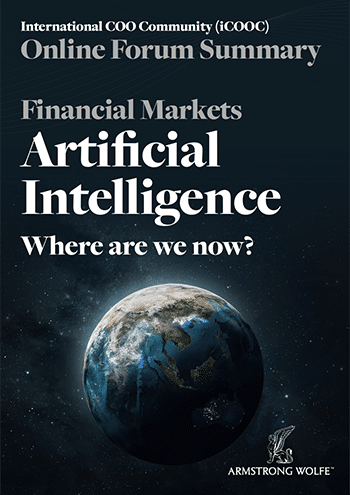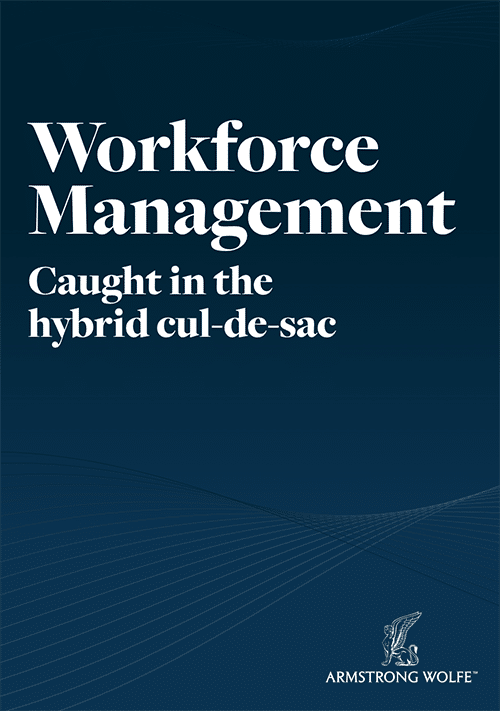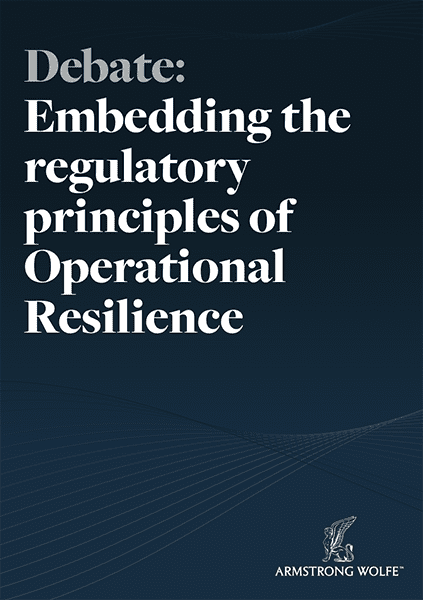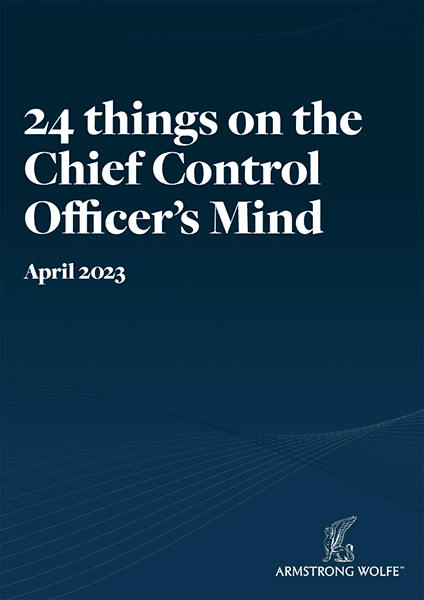“A COO will find the moment to excel and move from the periphery to the heart of the business”
REDEFINING THE ROLE
The COO post-credit crunch
The principal responsibilities of the COO were established in response to the demands on business heads to have a reliable and senior resource at hand to deal with the myriad challenges and tasks they faced in relation to personnel, budget, operational processes and technological requirements. In many commercial organisations, these tasks are often more commonly allocated to the Chief of Staff (CoS), Chief Financial Officer (CFO) and Chief Technology Officer (CTO). However, within investment banking, the front office or product COO evolved to respond to specific and often unique demands within areas that had arguably become stand-alone businesses – with significant revenues – in their own right.
The COO title is common, but the multitude of responsibilities allocated to it varies widely between individuals and institutions. The point of evolution of a business, its regional footprint and the personality of the COOs themselves will often inform the mandate of the role. This may fluctuate from being a fully empowered executive, driving the business forward, outward looking and in partnership with the business heads, to being a COO in name, but in practise acting as Chief Administrative Officer (CAO). This role is limited to coordinating and delivering a host of administrative and operational requirements, enabling the business to maximise sales and trading effort.
A fully empowered COO will invariably carry the full weight of a CAO’s responsibilities. This catch-all dynamic has become increasingly common, with tasks that are highly administrative in nature, being regulatory, compliance, and control issues, becoming business critical and are now central, not periphery, to the main effort of a COO. The absolute nature of these tasks makes them a priority on the agenda of any COO. This has, therefore, shifted the weight of a COO’s responsibilities more towards the administrative. Why? The catch-all has long been part of the COO’s mentality (‘We do whatever’s thrown at us’) and it has been both its enemy (making it difficult to quantify the role) and, more recently, its saviour, delivering influence and a degree of power.
What one COO does for his or her business head can differ greatly from another. Such variation offers challenges when benchmarking performance, value and reward. ‘I know the value they bring to me’ carries limited weight in an era when being able to quantify value is paramount. One result of this ambiguity was that COOs were often casualties in the post-credit crunch cost cutting period. It is easy to understand why. A COO does not directly contribute to revenues so naturally became the target for headcount reduction or at least compensation compression.
A new era
Some COOs do in fact define the CAO as the ‘Catch-All Officer’. For many this carries a negative connotation, but for some it has manifested itself in positive ways. The market shift in relation to regulation and the new focus on control (both crossproduct, market-wide and product- or business-specific) – and the responsibility to deliver on both – have become part of the COO’s mandate. What was aligned activity and responsibility has become central and absolute. COOs are now burdened (some would say overburdened) with the tasks born of these requirements. Where headcount in the COO’s office was previously scrutinised, many now find a request for increases in this area favourably received. This has enhanced the role of the COO’s and their visibility across the business front to back. It will be the making of many and the fall of some.
The regulatory and control era offers the opportunity for the COO community to define itself as critical to business success. What has been a nebulous mandate in the past is evolving into one that is clearly defined and business essential. This will, of course, change the allocation of time and effort expended on the daily, monthly and yearly tasks of the COO. The current COOs, whose experience has been weighted to the traditional deliverables of the COO (growth, building, strategy, etc.), will have to adapt to the demands of today (control, cost, efficiencies). It demands that the COO addresses this skill-set shortage or exposes the function or people within it to being replaced or ‘upgraded’.
Some say that 2011–13 was the dawn of a new era for the COO and an opportunity for those whose profiles may have been previously unsuited to the role. It was inevitable that the profile of the COO would change, as the market demands a different skillset and where the responsibilities of the COO will likely become more quantifiable in the future, required through regulatory responsibilities or by the growing cost of the COO function.
The by-product of this change will be enhanced and visible responsibility and increased accountability. It is possible – even probable – that COOs and their CEOs will have imposed and enhanced regulated responsibilities regarding control oversight and will be held responsible for control errors. Extending this supposition, it is not beyond the realm of possibility that regulators may seek to legislate this responsibility and allocate collective accountability to the most senior business people. “A Sarbanes-Oxley for the COO role would make many think carefully on this as a career path”, one COO commented.
Such a shift would also change the demands for reward, although it is currently accepted that this responsibility and that of trading risk and failings within the trading environment, rests with the business heads rather than the COO. However, many argue the COOs should ‘feel’ they have this accountability to ensure that risk is managed and mitigated appropriately, even though business heads retain accountability. Such accountability is presently self regulated and internal as opposed to external and imposed. It is unlikely that this situation will remain, as the creeping regulatory agenda will shift its lens to this area. However, one common view is that the COOs should be rewarded consistently across businesses, where individual performance assessments will be closely aligned to the success of managing control and operational risk within their area of direct responsibility.
The industry as a whole is being made more accountable, and in these changing times the COO will find the moment to excel and move from the periphery to the heart of the business.
The changing profile
The change in focus of the COO has increased the importance of the role. In doing so, it threatens to alter the weighting of the role and, consequently, the profile of person appointed. Presently, the COO community is largely populated by ex-traders or product controllers. The new regulatory and control era demands a COO with a broader background, perhaps including experience in legal and risk management.
The responsibilities of a COO and a CAO can be split, allowing the technical and behavioural competencies required to be individually defined. As the list of deliverables grows deeper and wider, the criteria required from a successful COO becomes correspondingly broader. The COO will be faced with the dilemma of working to retain these integrated responsibilities and, most likely, requiring additional headcount to deliver them or having to distribute some to support functions. COOs will maintain a dotted line of responsibility to ensure delivery, so while they may lose some control, they will retain responsibility and accountability.
Stripping out some of the traditional responsibilities leaves those that are core and business critical – the principal demands that will define the experience of the COO in a new era for the banking industry. This will of course vary from bank to bank and from product to product, but business heads will be required to think carefully about the primary responsibilities that should be laid on the shoulders of their COOs. In doing so, they will have to think more deeply about the skill-set required to deliver those priorities.












